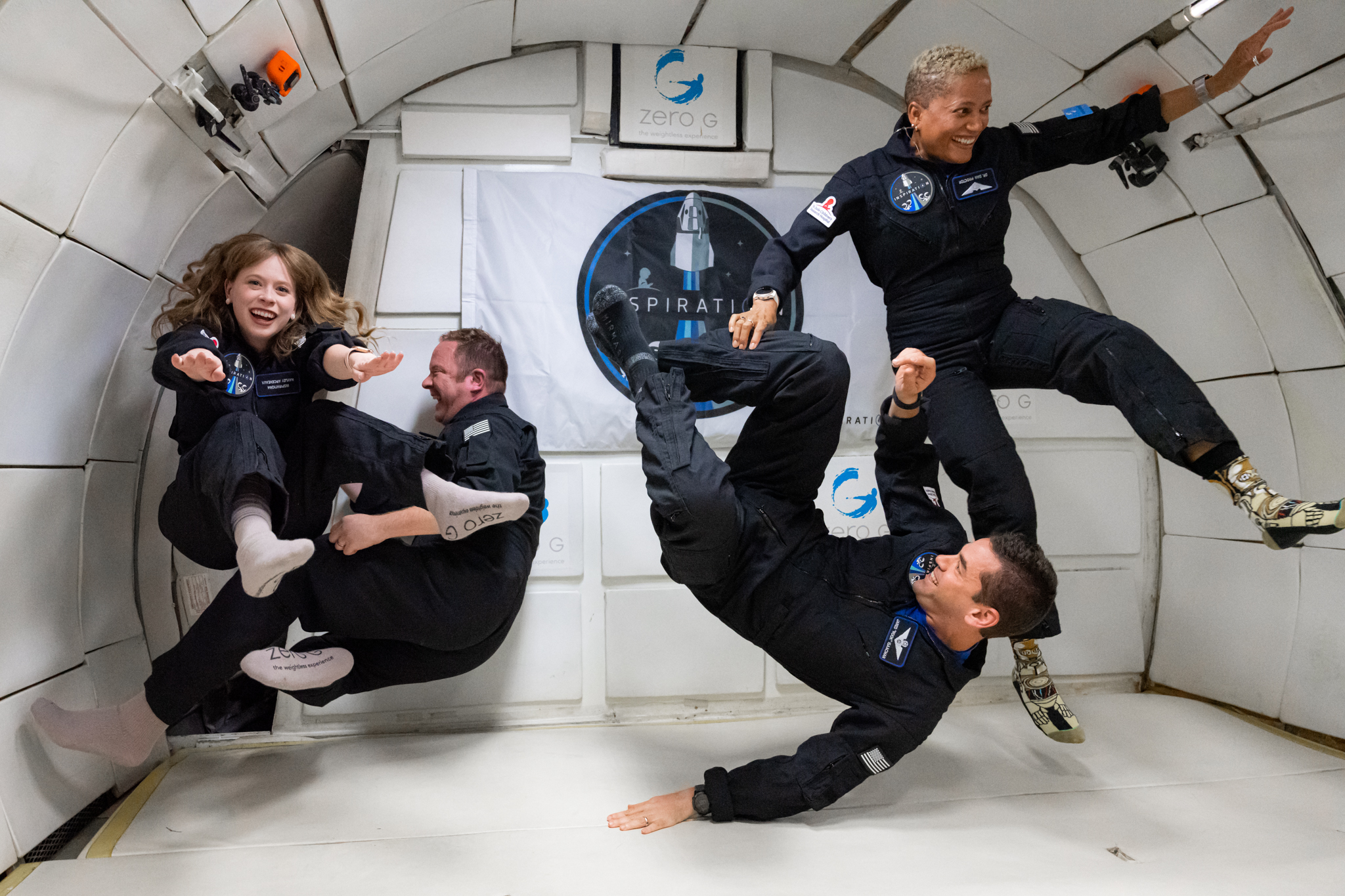News release
From:
How spaceflight affects astronaut health
Insights into how spaceflight affects human biology are described in the Space Omics and Medical Atlas (SOMA) package, published across the Nature Portfolio journals. The package includes analyses of samples collected from the first all-civilian crew from the SpaceX (Inspiration4) voyage and from astronauts who have spent 180 days or a year on the International Space Station, providing a longer-term view of the effects of spaceflight on health. The findings represent the largest compendium of data for aerospace medicine and space biology to date.
Spaceflight is known to induce molecular, cellular, and physiological shifts in astronauts and poses various biomedical challenges to the human body. As more people venture into space, understanding the health risks associated with space exploration is key for the preparation of long-duration, Lunar, and potentially Martian missions. However, current frameworks for aerospace medicine lag behind advances in precision medicine on Earth, which highlights the need for the rapid development of space medicine databases, tools and protocols.
The SOMA package includes data from a diverse range of missions, including the SpaceX Inspiration4, Polaris Dawn, Axiom, NASA Twins and JAXA missions. In a flagship paper, published in Nature, Eliah Overbey, Cem Meydan, Susan Bailey, Afshin Beheshti, Christopher Mason and colleagues present a detailed guide to the SOMA resource. They found that short-duration, low-Earth-orbit spaceflight conducted by the Inspiration4 mission resulted in broad-ranging molecular changes, some of which mirrored those that result from longer-duration spaceflight. These included elevated cytokine levels, telomere elongation, and gene-expression changes for immune activation, DNA damage response, and oxidative stress. Although more than 95% of markers were found to return to baseline in the months after the mission had ended, some proteins, genes, and cytokines appear to be still activated in the recovery period after spaceflight and persisted after flight for at least three months, such as alpha-synuclein (SNCA), collagen (COL4A2), and cytokines such as CXCL8.
In a separate Nature paper, Mathias Basner, Christopher Mason and colleagues present data from Inspiration4, in which 4 civilian astronauts flew a 3-day mission at 590 km above Earth — higher than the International Space Station (which orbits between 370 and 460 km above Earth). The mission featured new hardware and diagnostic devices for spaceflight. They found that this short-duration mission did not pose a significant health risk for the crew, and present data that describe the earliest phases of adaptation to spaceflight in the human body at anatomical, cellular, physiological and cognitive levels.
In a Nature Communications paper, JangKeun Kim, Braden Tierney, Scott Smith, Sara Zwart and colleagues investigated the effect of spaceflight on the immune system of the civilian crew on board the Inspiration4 mission and compared these to 64 other astronauts, providing a high-resolution map of the response of the immune system and microbiome to spaceflight. They find both conserved and distinct immune system disruptions across missions, providing a single-cell immune reference for future missions, including gene expression, chromatin accessibility, and transcription factor motif accessibility changes. Certain cell types respond to spaceflight differently, with CD14 and CD16 monocytes showing the greatest change in chromatin accessibility and gene expression. They also report that females returned to baseline faster for gene expression changes and chromatin states. Also, they found that fibrinogen and IL-8 are also affected in a sex-specific manner, indicating that blood clotting and immune system regulation are important for future studies on precision astronaut medicine
The catalogue of SOMA papers also explores epigenomic and transcriptomic (and epitranscriptome) changes, microbiome dynamics of the crew and spacecraft, proteomic and metabolic changes in the secretome and exosomes, mitochondrial responses, ethical considerations, countermeasures to mitigate the damage caused to the body from the space environment, and proposals for new missions. Leveraging the datasets, tools, and resources in SOMA may help to accelerate precision aerospace medicine, improve health monitoring and risk mitigation, and provide baseline data for upcoming lunar, Mars, and other space missions, the authors suggest.
***
Please note that an online press briefing for this package will take place UNDER STRICT EMBARGO on Monday 10th June at 3pm London time (BST) / 10 am US Eastern Time.
Authors Christopher Mason, Afshin Beheshti, and Susan Bailey will provide a short introduction to the research. We will also be joined by Chris Sembroski, one of the astronauts from the Inspiration4 mission. This will then be followed by a Q&A.
To attend this briefing you will need to pre-register by following the link here. Once you are registered, you will receive an email containing the details for the briefing. You will also be provided with the option to save the details of the briefing to your calendar.



 International
International


